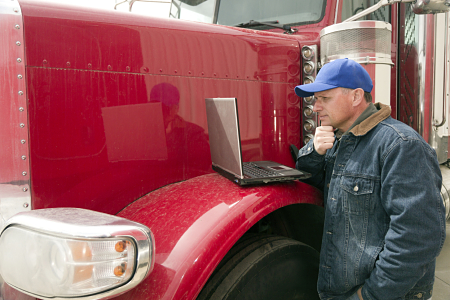ELD regulation nearing publication
The much anticipated U.S. Department of Transportation (USDOT) regulation on electronic logging devices (ELD) will be published before the end of the year, according to USDOT sources.
In its November Report on Significant Rulemakings, USDOT reported the final rule cleared the Office of Management and Budget on Nov. 13 will be published in late November or early December.
According to DOT, this ruling would establish:
- Minimum performance and design standards for hours-of-service (HOS) electronic logging devices (ELDs);
- Requirements for the mandatory use of these devices by drivers currently required to prepare HOS records of duty status (RODS);
- Requirements concerning HOS supporting documents;
- Measures to address concerns about harassment resulting from the mandatory use of ELDs
The ELD regulation mandates the use of ELD technology to record a driver’s Record of Duty Status (RODS), replacing the paper logbook some drivers currently use to record their compliance with Hours of Service (HOS) requirements.
The trucking industry will have two years from the regulation publication date to implement the ELD regulation.
ELD systems in place today feature a range of integration with the vehicle. Systems can do the following:
- Track a driver’s HOS electronically;
- Are synchronized with a truck’s engine, capturing each drive segment;
- Transfer data to safety or fleet managers who can view the logs on a near real-time basis
Today’s technology allows fleets to monitor and record a whole host of data about the vehicle and its driver that go beyond RODS — from Driver Vehicle Inspection Reports (DVIR) and IFTA automation to driver behavior reporting on speeding, idling, and hard braking.
Many systems integrate map and route solutions as well, which can help drivers navigate around construction and avoid high-traffic areas.
Proponents of the ELD systems tout the following:
- They save driver time by reducing paperwork
- Keep dispatch up-to-date on a driver’s status, letting them plan for loads better in light of HOS compliance needs
- Reduce the time intensive requirements of paper logs
Smartphones and tablets can be used with ELD systems as long as they meet Federal Motor Carrier Safety Administration (FMCSA) requirements.
Drivers are migrating to mobile technology without the ELD mandate. Smartphones are easy to use and allow drivers to be untethered from the cab.
FMCSA Acting Administrator Scott Darling recently told an industry audience that the ELD regulation was designed to weed out “unsafe” operators.
“We need to do everything we can to take unsafe carriers and drivers off the road,” he stressed. “They hurt our industry and our economy.”
Darling said the regulation will benefit the industry.
“Although we cannot discuss the provisions of a Final Rule before it is made public, I can say that the rule is designed to benefit everyone by improving hours of service (HOS) compliance, which we estimate will prevent about 20 fatalities and over 400 injuries each year; helping businesses cut paperwork and save money; protecting drivers from harassment; and making it easier for law enforcement and safety inspectors to review driver HOS records,” he said.
Jason Seidl, an analyst with the Cowen Group, said the implementation of the ELD rule should be a positive for the industry.
“We believe the ELD implementation will be a net positive for larger carriers,” said Seidl. “As they are already largely compliant and stand to benefit from a reduction in capacity at smaller operations, which make up roughly 80 percent of the highly fragmented truckload industry. Even the smaller carriers may reap net productivity gains in the long term, after initial losses, as they become better able to manage their drivers,” he added.
The initial ELD regulation was not welcomed by the Owner-Operator Independent Drivers Association (OOIDA), which said the rule did nothing to prevent driver harassment related to the utilization of the new devices.
OOIDA said it feared that dispatchers would try to supersede driver decisions to when and where to stop for the day based on the amount of available time showing on the ELD, which can be monitored at the dispatcher’s location.
OOIDA filed suit, forcing FMCSA to re-visit and update its proposal with safeguards to prevent driver harassment.
FMCSA says the regulation will protect drivers from harassment through an explicit prohibition on harassment by a motor carrier owner toward a driver using information from an ELD. It will also establish a procedure for filing a harassment complaint and creates a maximum civil penalty of up to $11,000 for a motor carrier that engages in harassment of a driver that leads to an HOS violation or the driver operating a vehicle when so fatigued or ill it compromises safety.
The proposal will also ensure that drivers continue to have access to their own records and require ELDs to include a mute function to protect against disruptions during sleeper berth periods.






